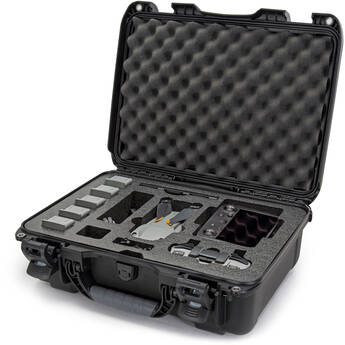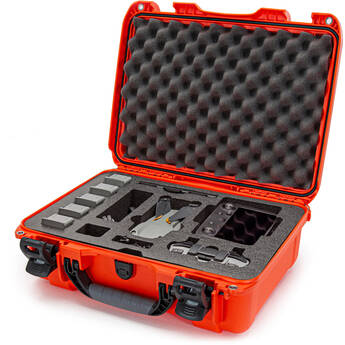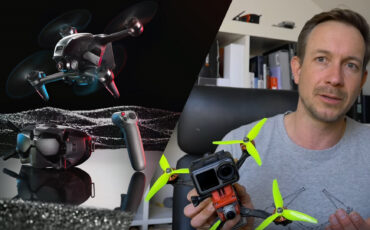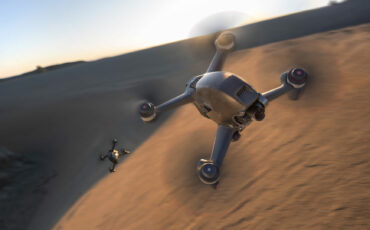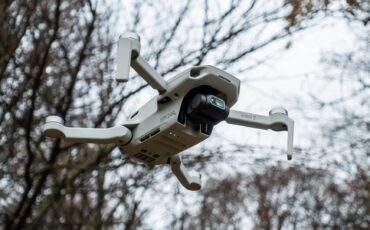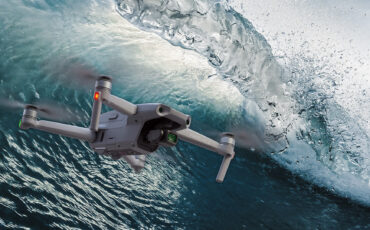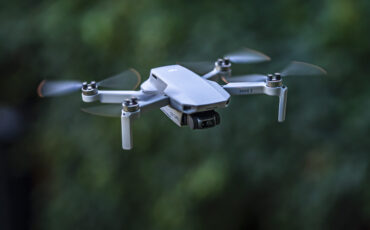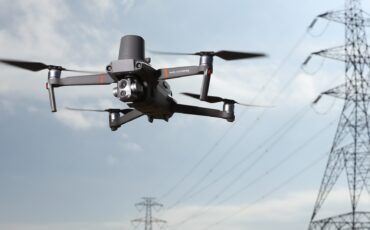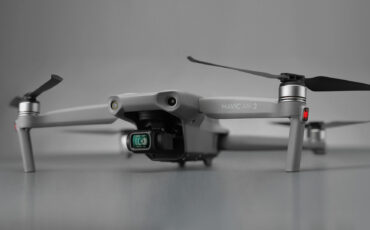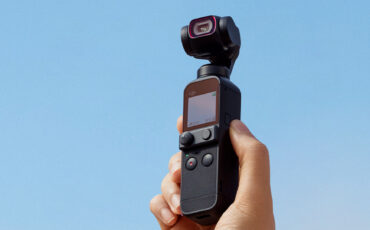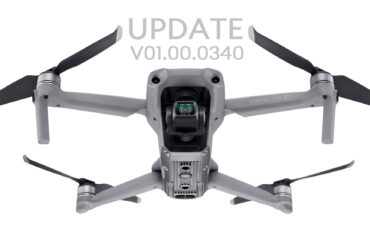DJI Air 2S Review – First Look and Footage from the new Drone
Music Courtesy of Epidemic Sound
5.4K resolution on a 1 inch sensor, a wider view and better sensors – this is the new Air 2S, DJI’s newest drone. I took it for a first spin and here are my thoughts in this DJI Air 2S Review. Additional drone announcement information, in the article my colleague Jakub wrote.
DJI Air 2S – No more “Mavic”
So here it is, the newly announced DJI Air 2S. Like with the Mini 2 before (review here), DJI dropped the brand name “Mavic” from this product too, probably a sign that this foldable design is their new standard for consumer and prosumer drones – which means, by the way, that we probably won’t see a new drone in the Phantom line anymore, but that’s just my guess.
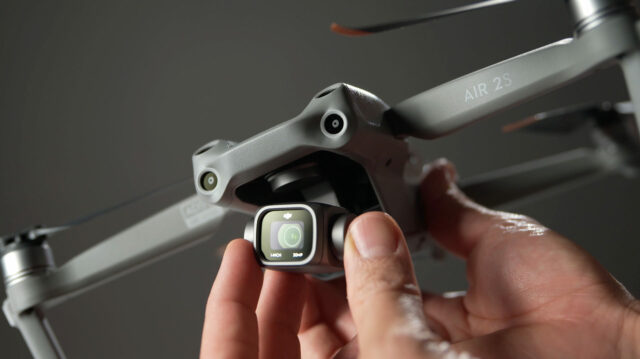
Foldable design, weight and what the “S” means
The design of the Air 2S looks very, very similar to what we have seen before. With just below 600 grams it’s almost the same weight as the Mavic Air 2 which will also remain in the market – and the size is identical (read/watch our Mavic Air 2 review here in case you missed it). According to DJI, the S stands for surprising, superior, safe, smart and satisfying. Well, what I can tell you apart from the manufacturer’s marketing talk is that the Air 2S boasts a 1 inch sensor, just like the Mavic 2 Pro which was introduced two and a half years ago.
1-inch sensor, 5.4K resolution, up to 4K 60p
The 1-inch sensor is improved over than the one in the Mavic 2 Pro though, because it now has a 5.4K resolution. And where the Mavic 2 Pro maxes out at 4K with 30 frames per second, the Air 2S can do up to 4K 60 and – listen up – 5.4K with up to 30 frames per second. Like the Air 2 and Mavic 2 Pro, the Air 2S can stay in the air for over 30 minutes. In reality of course, when flying at normal wind speeds it will be a bit less than that, but it’s still very decent.
Philip Bloom's Cinematic Masterclass
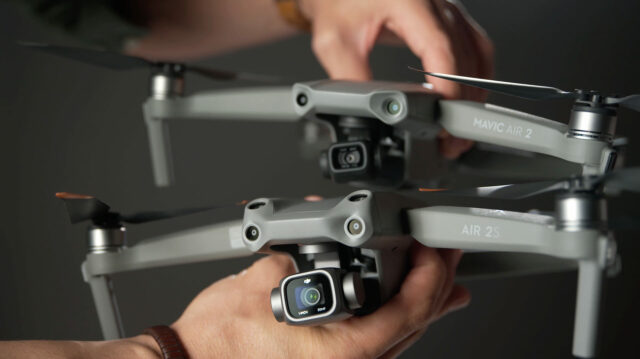
Pro movie settings, fixed aperture
Compared to the recent DJI FPV (read/watch my review here) and Mini 2 drones, it’s very refreshing to see the comeback of all the professional movie settings in the Air 2S. You simply tap on the “Auto” icon in the bottom right corner in the DJI Fly app and then you have access to changing the shutter speed, ISO, white balance, resolution, frame rate, and so on.
However, there is one big thing that is missing and that’s the aperture setting. On the Mavic 2 Pro you can change the aperture from f 2.8 to f 11, which is simply amazing when you are flying and have to adjust for changing lighting conditions. The attachable NDs have a fixed strength, so changing the aperture would be the only way to change the amount of light hitting the sensor without affecting the look of the movement, which of course happens when you are changing the shutter speed. On the Air 2S, we have a fixed f 2.8 aperture, which means that we simply have to adjust the shutter speed when we are up in the air in changing lighting conditions, unfortunately.
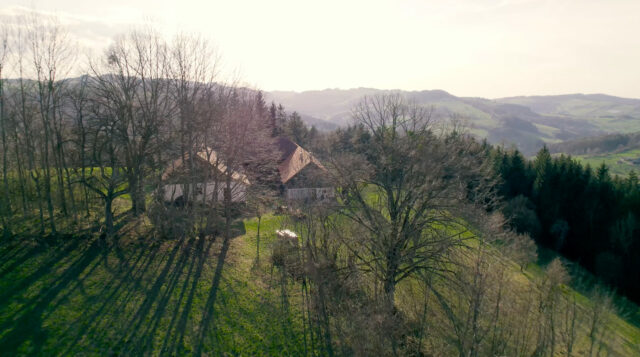
Image quality, picture profiles, field-of-view
Let’s talk about image quality. Having a 1-inch sensor means that we have a clearer image with less noise than with the 1/2 sensor of the Air 2, due to the larger pixels of the Air 2S. We also have a shallower depth of field of course, if we’re flying close to something.
Next to the Standard picture profile, which is always very contrasty, the Air 2S also offers an HLG recording mode for high-dynamic range shooting as well as D-Log mode to make use of the full latitude of the sensor in post-production. Both the HLG as well as the D-Log modes are 10-bit color modes, only the standard mode is 8-bit. Like all other current DJI drones, you can chose between H.264 and H.265 codecs, but if you want maximum quality and 10-bit color, you should only use the H.265 codec, which goes up to 150 Megabits per second.
One thing that always annoyed me a little bit with the Mavic 2 Pro was the fact that it has a 28mm equivalent field-of-view, which is often simply not wide enough for aerial shots. The Air 2S now has a 22mm lens, which of course gives a much wider field-of-view that shows off foreground-background movement much better. And, by the way, the Air 2 has a 24mm FOV, which means that the Air 2S wins in that regard.
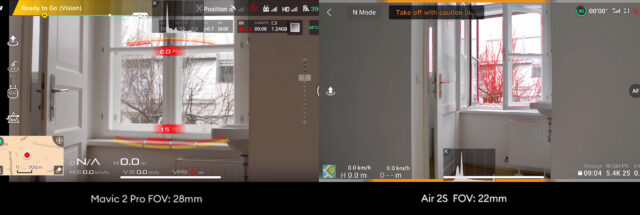
When I tested the Air 2S, I was mostly shooting at 5.4K just to test out the high resolution, and I have to say that I am really, really impressed with the image. The new sensor renders highlights and shadows very well. I also shot a lot of HLG HDR footage and to my eye, it looks a lot less noisy than the HDR image from the Mavic 2 Pro. If there is no post-processing involved, HLG will definitely be my go-to image mode from this drone.
Even in D-Log, Air 2S footage looks a bit more sharpened than Mavic 2 Pro footage, I just hope once again that DJI will allow for the post-sharpening to be completely disabled with an upgrade.
Slow motion quality
I tried slow motion shooting in 1080p at 120 frames per second on the Air 2S flying over a lake and filming the water ripples, but I have to say, this mode looks almost unusable, it’s cropped and shows heavy artifacts, aliasing and lots of noise. There is a lot of room for improvement here for DJI and if you want to get a nice result, I wouldn’t touch this mode at all.
The drone can shoot 4K 50p and 60p as mentioned in the beginning, however it will crop into the frame once you switch to these higher frame rates in 4K.
MasterShot feature
DJI introduced a new feature called MasterShot which is definitely mainly a consumer feature. It’s like a new, more extensive version of the automated QuickShot feature we have seen in all their new drones over the last few years. MasterShots are supposed to generate more professional-looking shots that are hard to pull off for less experienced pilots. After the automatically generated shots have been recorded, you can chose a theme in the DJI Fly app and it will automatically generate a video based on your settings. Again, this is nothing a filmmaker would take seriously, but I guess it’s nice to have – I can see this being overused on social media almost instantaneously though.
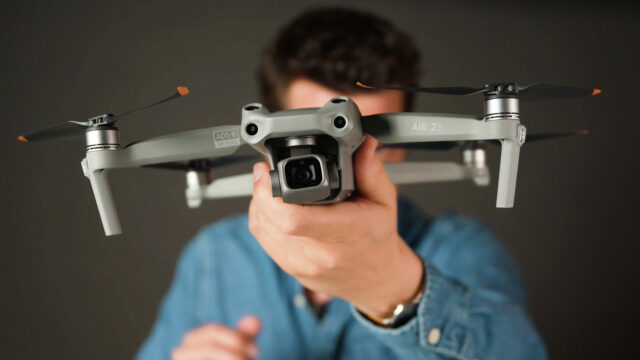
APAS and FocusTrack
The DJI Air 2S has a lot of sensors that can track obstacles in front, behind, above and below the drone, which makes its FocusTrack feature very impressive. It can autonomously follow a subject by keeping it in frame and avoiding obstacles using APAS 4 technology, even if the subject briefly disappears. This is similar to the Air 2 which also has impressive autonomous flying functions that I reviewed before. Please note that the FocusTrack feature doesn’t work in the 5.4K mode, you will have to go down to the 4K mode. This is certainly due to internal processing limitations with the high resolution footage.
Unfortunately though, the Air 2S is missing the side sensors from the Mavic 2 Pro, which of course makes flying sideways much more dangerous than with the Pro. The 2 Pro might not have all the advanced tracking functions because it’s already 2 and a half years old, but it’s definitely safer to fly in many regards because it has those sensors on all sides.
OcuSync 3.0 becomes O3, transmission quality
In terms of image transmission, the Air 2S uses a new, upgraded version of OcuSync, now called O3. Using 4 antennas you theoretically can fly up to 12 km far with this drone, while maintaining a 1080p image transmission signal. I am amazed how low the latency was even when flying several kilometers away, and I saw no image dropouts, even though I didn’t always maintain line-of-sight connection when flying over fields nearby. I could definitely feel the difference to the Air 2 and Mavic 2 Pro in terms of how good the connection is – but don’t get me wrong, it’s not like the connection of the other drones was bad at all.
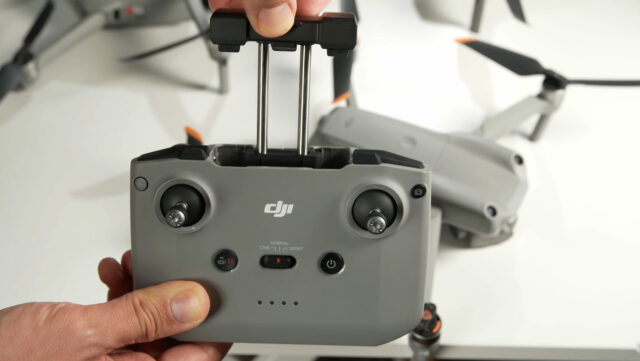
Remote Controller – Motion Controller & Goggles not compatible
The Air 2S uses the same remote controller that was introduced with the Mini 2, and also used on the Air 2 and the DJI FPV drone. This one is great because it lies good in the hand and it has a very large battery built in, so you don’t need to recharge it very often.
Talking about controllers, unfortunately the newly introduced Motion Controller which came out with the DJI FPV last month, will not work with the Air 2S for now. Also the DJI Goggles v2 are not compatible with the new Air 2S.
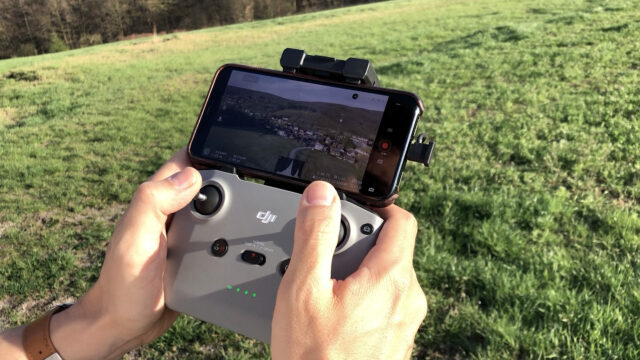
Flying modes – Tripod Mode vs. Cine Mode
In terms of flying speeds, we have the Normal mode, the super-fast Sport mode – where all obstacle avoidance is disabled – and the Cine mode, which is meant to be a slower precision flying mode to allow for more “cinematic” movement. But as my friend dear Philip Bloom correctly pointed out to me, that Cine Mode is much, much faster than what used to be called the tripod mode on the Mavic 2 Pro, for example. To be precise, the Cine Mode is around 5 times faster, which means it is super difficult to get these slow, intricate movements that were so easy to do before. In order to fly extremely slowly using the Air 2S in the Cine Mode, you need to move the joysticks ever so slightly, which is very hard to do. DJI, please allow us to adjust the speed of the Cine Mode in the settings like you allow us to adjust the jaw tilt speed or the range of the drone – the exact speed of the modes should really be a setting in the drone!
Photo functions
In terms of photo capabilities, the Air 2S offers 20 Megapixels of resolution with single shot, burst and auto bracketing modes as well as timed modes. It also has a SmartPhoto mode which includes HDR photos and Hyperlight for low light photography, like on the Air 2. Shooting DNG raw photos is possible too, which is of course great for processing the highest possible quality of a photo in post production. And of course it still has functions like HDR panorama and hyperlapse.
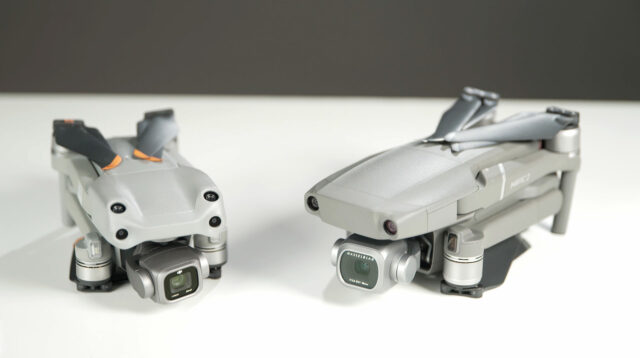
Conclusion – is the DJI Air 2S worth it?
So after these first few days of using it, if you ask me: Is the DJI Air 2S worth buying over the Air 2?, my answer is a resounding yes. For around 150 Euros more you get a drone that delivers even better images from a better and larger sensor, in a drone that has even more advanced autonomous flying functions. It’s definitely worth that little extra.
But if you are torn between buying a Mavic 2 Pro and the new Air 2S, the decision is a bit more difficult: The 2 Pro offers a 1 inch sensor as well, but it can’t shoot more than 4K 30p – yet it has the super slow tripod mode, sideway sensors and a more organic-looking, less sharpened image in D-Log for more flexibility in post-production. The Air 2S, on the other hand, is a much newer drone with the latest transmission and imaging technology, but it compromises a bit on the tiny details for pro shooting. DJI surely doesn’t make it easy for us choosing between the two. But considering the €500 price difference, I would probably opt with the Air 2S and not feel sorry for myself if the Mavic 2 Pro gets replaced anytime soon.
What do you think about the new DJI Air 2S? Will you consider buying this or are you upgrading from another drone? Let us know in the comments below.
